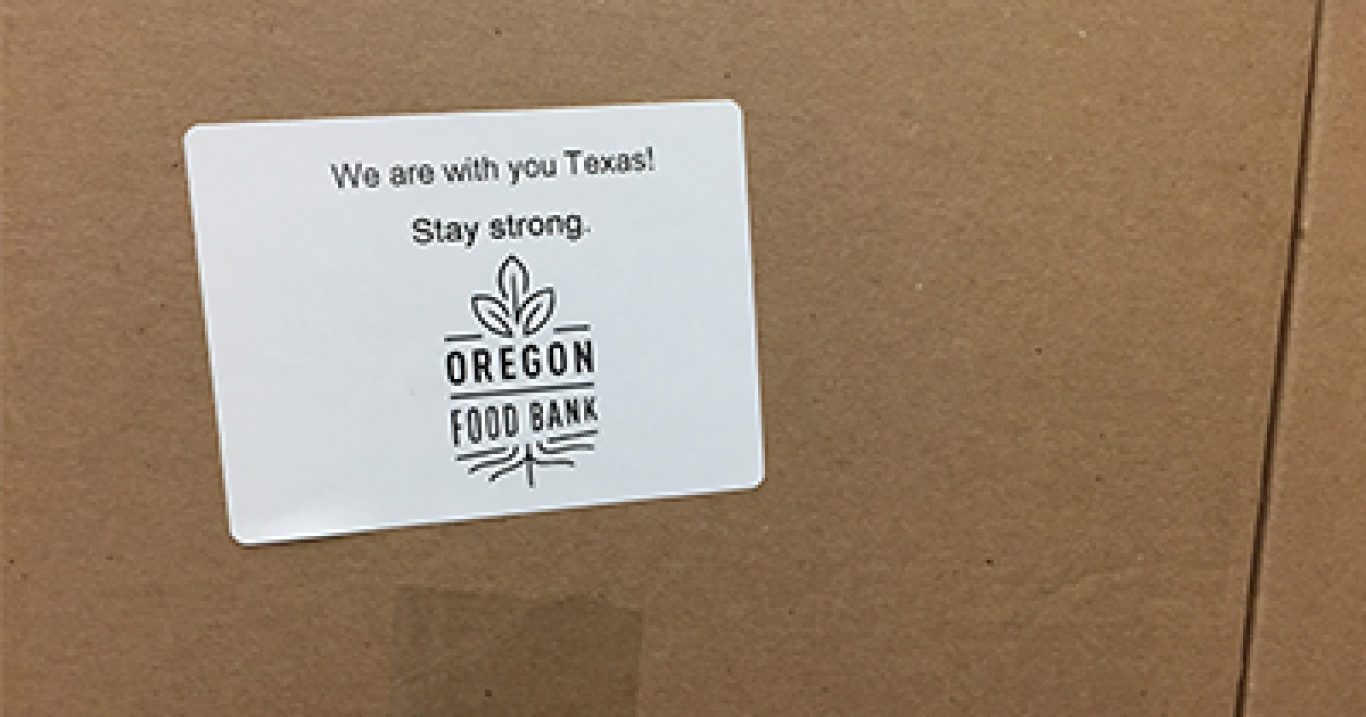ACA helps end “food or medicine” dilemma – by David Sarasohn
ACA helps end “food or medicine” dilemma – by David Sarasohn
November 29, 2017 – These days, at 70, Bill Brandt-Gasuen sounds delighted to call himself a full-time volunteer, spending time sorting and packing at Oregon Food Bank locations. He spent decades as a Teamster at Consolidated Freightways moving trucks and loads around the yard, a job he liked that ended suddenly when the company went bankrupt.

Bill Brandt-Gasuen volunteering at Oregon Food Bank.
Within sight of retirement and a settlement from the company, he could cover his bills. What was tougher was replacing the medical coverage that he’d gotten from his job. Staying on the same policy would have cost him $900 a month, and a previous health problem left two other insurance companies with no interest in covering him.
For years Bill held his breath and went uninsured.
When something serious happened to him, a clinic wouldn’t handle an uninsured patient. Instead, Bill went into a hospital, and the removal of his polyps also removed $4,000.
Following the passage of the Affordable Care Act (ACA), Bill again had health insurance. It changed things when he found himself in another emergency situation and back in the hospital. This time the bill was $12,000 – but his insurance paid all but $900.
“When they call it ‘Obamacare,’” Bill says, “I would only say, I love it.”
There are those, especially in the power corridors of Washington, who disagree. After failing in legislative efforts to repeal and replace it, and trying to use the tax overhaul to take the program apart, the Trump administration has been working overtime. In efforts to undermine the program they’ve decreased enrollment times and client support while disseminating discouraging hints about how much subsidy will be provided for low-income insurance buyers. In mid-November, The New York Times reported that uncertainty about subsidies was causing insurance premiums to spike to dizzying levels.
Lisa Hamler-Fugitt didn’t have to read the article. She is CEO of the Ohio Food Bank Association, which took up the challenge of the ACA by becoming the lead navigator for the entire state, guiding clients through baffling paperwork and on-line labyrinths. The association employed 64 full-time navigators available 365 days a year, who helped tens of thousands of Ohioans apply for health insurance, almost three-quarters of them qualifying for the ACA’s expanded Medicare program.
With a new White House administration in control, the association applied for a renewal of its $1.7 million federal support grant as a navigator. Instead, it was told that the grant would be cut sharply, and eventually saw it slashed by 70 percent. The association suggested that for a quarter of the funding it could only do a quarter of the work; when that was rejected, the association could only abandon the role entirely.
“At this point it was clear to us that the Centers for Medicare and Medicaid and the Trump administration were not honest brokers, but were doing everything they could do to sabotage us,” said Hamler-Fugitt sadly. “We didn’t see any viable way to go forward.”
Leaving the navigator role, the association still encourages its clients to pursue coverage, to go to healthcare.gov themselves. As Hamler-Fugitt notes, more than a million Ohioans have health coverage who didn’t have it before the ACA, and those gains shouldn’t be easily surrendered. But maintaining them is complicated. Many of the Ohio Food Bank Association’s clients are in constantly changing financial situations, and go back and forth between qualifying for Medicaid and making enough to need private insurance with federal subsidies. Without a navigator, it’s tricky terrain.
It’s especially tricky when the Trump administration cut back on advertising for the program and on the time window when registration is possible. The situation could be further complicated if the tax overhaul drops the requirement that Americans have health insurance, likely raising premium costs and causing an estimated 13 million fewer people to be insured.
So far, enrollment has been unexpectedly strong. It turns out people like having health insurance. But rising discouragement from government is likely to change that.
Which in a time when millions have to choose between paying for food and health care, and medical bills are the top reason for bankruptcy filing, makes the hill even steeper for hunger fighters.
“It’s up to all of us, especially those in the hunger community,” said Lisa Hamler-Fugitt, “to look at the issue of hunger and health care more holistically.”
Bill Brandt-Gasuen already does.
If not for the ACA, he says, thinking about his $12,000 hospital tab, “I wouldn’t be volunteering at the food bank. I’d be working at 7-11 to pay it off.”
Health care and food are connected in more ways than you might think.
